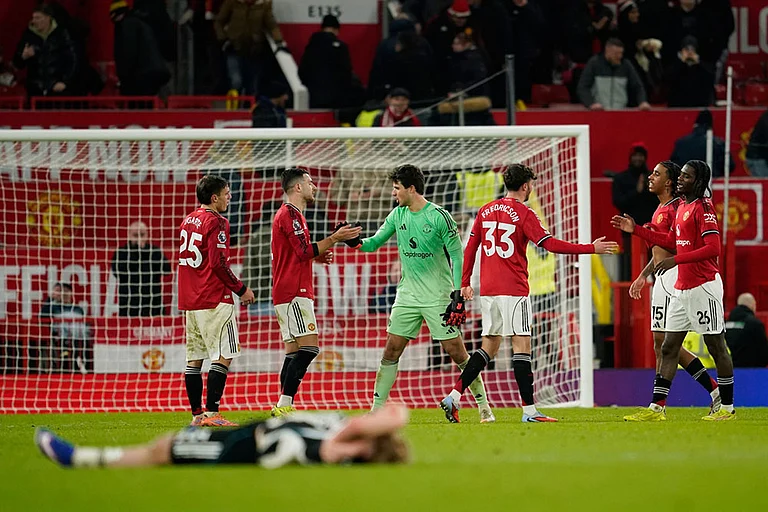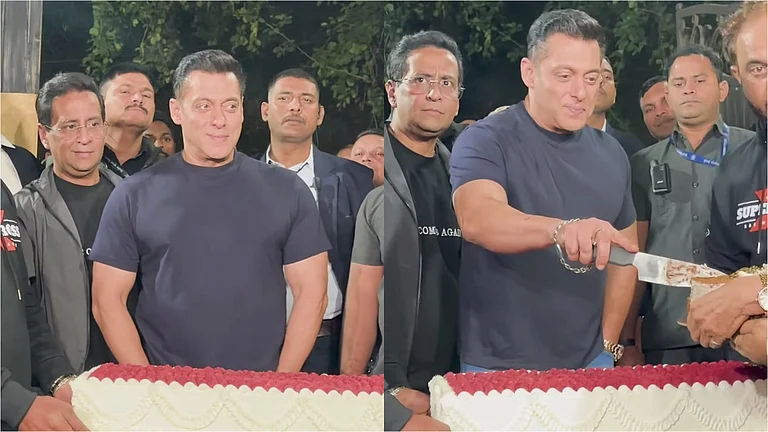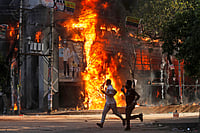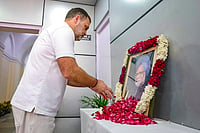Given the state of the poor in our country, most people who can read and write would likely fall outsidethe ambit of poverty alleviation programmes of our government; very few of us would have actually applied fora subsidised housing programme, or the green ration card with extra privileges, or guaranteed employmentschemes.
But we talk about them. Especially in the light of the recent election results, when so much discussion hasrevolved around the term "Reforms with a human face". We have an abstract construct of the "teemingmillions" of rural poor, without a visceral connection to them.
What we do know is that there is tremendous inequity in our country, and that somehow there must be a wayfor the rising tide of prosperity to lift all boats. Half ridden with guilt and half riddled with ignorance,we therefore allow our governments to seriously contemplate new kinds of reforms, those that promise - yetagain - not to leave anyone behind.
The myth of "urban elites and rural poor"
But if these reforms really have to trickle down from New Delhi to the towns and villages of India wherethe poor live, we must think about the nature of these reforms. And if we are serious, the first thing we willdo is to get away from the artificial urban-rural divide. The myth of "urban elites and rural poor" isfast becoming a sacred cow: those who challenge it do so at the risk of ridicule and marginalisation. Thefacts, however, are startling: at the turn of the century, there were 100 million poor citizens of Indialiving in our cities and towns. This number is bigger than the entire population of Germany, France or theUnited Kingdom. More than 10% of our country’s citizens are the urban poor, and they are getting lost in thepenumbra of the spotlight on the rural poor. By 2030, 600 million Indians will be living in our cities andtowns, and a third of them will be poor. If we are serious about reforms, the first step would be toacknowledge the legitimacy of the urban poor. Let us change our delivery systems to benefit all thepoor, wherever they are.
While the talk of "reforms with a human face" seem to suggest that we need newdirections in poverty alleviation, many might agree that the problem is not misplaced ideology or poor policy,but bad implementation. In fact, there is almost universal agreement that the government has poor deliverysystems. The puzzling part is, why do we not fix the delivery systems, irrespective of which path of the ideologicalfork we choose to take our country down?
This point is especially appropriate given the recent elections results. With the oncoming monsoons, wealso have a charged ideological climate now in our country. There is talk about the limitations of thelaissez-faire ideology underlying liberalisation, of bringing social justice back onto the table. This is ahealthy debate, and will only result in positive outcomes, especially given that extreme options at both endsare now considered out-of-bounds.
But in all this heated and sometimes frantic exchange, delivery seems to be getting short-shrift onceagain. Is it because nobody knows how to fix it, or that fixing it is too difficult, so it is easier to "announce"new policies?
And, given the importance of delivery, could there be credence to a suggestion that "fixing the deliverysystem" itself should be one of the central planks of second-generation reforms?
In this context, it would be useful to get a better appreciation of what these delivery gaps are,specifically in the context of poverty alleviation. Let us examine the process of poverty alleviationprogramme delivery, pausing for a change to understand the details.
To do this, we need to identify those bundle of goods and services that need to be made available to thepoor. I mean exclusively as a separate group, as targeted beneficiaries, not just as part of the largercitizenry. For example, everyone benefits from the public transport system. Where it runs well, publictransport cuts across class barriers.
What about education? Same argument. If we had a robust public education system, most people would opt forit. As they do overseas: very few people in developed countries can afford to send their children to privateschooling; in fact, they choose where to live based on the quality of public education. In India, clients ofpublic education are sending a signal about the quality of service delivery: whoever can afford to opt outdoes so.
The same goes for healthcare. Given the escalating costs of healthcare, if we had a solid public heathcaresystem, most citizens would opt to use it, not just the poor.
Ditto for roads, highways, water supply, sanitation, registration of births and deaths, crematoria, drivers’licences and so on. Wherever the government provides these services, it benefits all citizens. In fact, insome of these, like water supply and sanitation, the poor are actually not even getting the same basicservices as the middle class and the rich. The challenge here is therefore universal access, one step beforeexclusive services and support for the poor.
So, what are the services that need to be made available exclusively for the poor? Three items stand outprominently: food, housing and livelihood. There could be others, but these are decidedly the mostsignificant.
In each of these, it can be argued that the poor need a helping hand, to ensure that they climb out ofpoverty and that there is a safety net beneath them as they make this journey. So, "second-generationreforms" or "reforms with a human face" could be about more and better services in food supply, housingand livelihoods for those below the poverty line.
I will use examples from each of the three items of food, housing and livelihoods above, to illustrate thedelivery challenges that we face.
Food
Take food supply, in the form of our public distribution system.
Assume that there is a new food supply programme that is announced, for example more rice and grains andkerosene for each poor family, at subsidised prices.
This is a policy directive that emanates from deep within the bowels of North Block in New Delhi. The poorlive scattered all over the country. So, how will they get the benefits of this new scheme?
First off, there is a complex supply-chain of delivery within government for this new scheme to tricklethrough. Assume that this scheme actually arrives without distortion to the local village or town, in thesense that there are clear guidelines, as well as supplies and funding.
This scheme now needs to be implemented by some second-division assistant in the Foodand Civil Supplies department. How will he do this? The first question is, "Who will qualify for thesebenefits?", to which the answer is "The poor, of course." But how do we determine who is poor,it is such a fuzzy term. There is a definition called BPL, which is "Below Poverty Line". So, anyone whois BPL is eligible for these benefits. OK, second question, "What defines the BPL threshold?"
Without getting into technicalities, it is defined in terms of calories of food intake per person per day;this is then translated into an income figure, which is different for different states.
So, let us say that we have an annual income figure of around Rs 20,000 for a family, below which theyqualify to be on the BPL list.
Now, how does this second-division assistant determine income levels among the poor? They don’t paytaxes, or file returns; their incomes are invariably sporadic, cash-based, daily wage-based, seasonal etc.
Since the income is hard to determine, the department uses "proxies" for income: what is the type ofhouse, do they have their own toilet, do they have an electrical connection and so on. In total, there areabout 60 such parameters that the Food and Civil Supplies department uses to determine qualification for thegreen card for BPL families.
This information now has to be collected; the agency has no staff to go around to do this, so they hire anoutside firm to conduct this survey. Many of the parameters are quite subjective, and difficult to verify. Inurban areas especially, it is difficult to really establish domicile.
In addition to the collection difficulties, this data now has to be maintained and updated, for lakhs andlakhs of records. In Karnataka, for example there are 70 - 75 lakh green card families. How does this data getstored? How are changes made? How often? What if someone dies, what if they move within the same area, ormigrate? Simple logistical questions.
One would think that we could have some common data set for all citizens, like the Voter List, or theCensus Board information. Unfortunately, the Census Board data is privileged, they do not give it out toanyone, including to government agencies. And the Election Commission Voter list is a) incomplete and b) "adultsonly". And since we don’t have a Social Security Number in our country, it is difficult to establish bonafides and weed out duplication.
What I have just described is for one department.
If there is another department that also needs a BPL list for its own special programme, say, housing, theydon’t use the same BPL list as the Food and Civil Supplies Department. Instead, they generates their ownlist. Which could have parameters that are not entirely consistent with that of the F&CS department.
In fact, in Karnataka, there are 6 lists of citizens being maintained by different arms of the government!And there is little overlap between these lists. I am sure that this story would not be different across thecountry.
Remember, inclusion on the list is the starting point to receive the benefits of the particular programme.One can imagine the pressure being applied to arbitrarily "expand" the list. Often, this is no longer anobjective enumeration exercise, but begins to resemble a "friends and family list" of the localpolitician.
These are the little details that determine the success or failure of a programme.Even those with the best of intentions, as they leave with the passport of political sanction from New Delhi,and get lost in the bylanes of bureaucracy. Note that this is not red-tape - a convenient buzzword -but poor process design. The problem cannot be solved by cutting red-tape - a favourite aphorism these days,it needs to be solved by business process re-engineering. This begins with a recognition of the importance ofdetail, something that our Cabinet Secretaries and Union Ministers forget, as they look to grapple with thetantalising - and heady, I might add - problem of solving the problems of millions of poor Indians. The desireto address problems of scale always results in the compromising of crucial detail.
And because the solutions to fix the details are complex, we end up measuring "inputs" rather than "outputs":how much money was spent on a new poverty alleviation programme rather than how many people are coming out ofpoverty, how many schools were built, rather than what are our scholastic levels are, and so on.
This is part of the governance problem: like the famous Supreme Court Judge in the US who, when pressed todefine obscenity said, "I cannot define it, but I know it when I see it", governance is a fuzzy phrase,hard to define, but easy to see in action. Whatever the definition, one aspect of good governance must beabout the process of decision-making, about the quality of information that courses through the veins of theinstitutions, about the details that make up high-quality delivery.
This is the ground reality of poverty alleviation programmes. So, even before we look at the design of anynew "human face" programme, let us recognise the delivery constraints in identifying the truebeneficiaries.
Housing
Now, let us look at programme design. Let us take the second big poverty programme:housing.
A typical housing scheme, Indira Awas Yojana in rural areas, (or Valmiki Ambedkar Malin Basti Avas Yojana (VAMBAY)in urban areas) is designed as follows:
Cost of house: (approx.) Rs 50,000
Upfront payment by the allottee: Rs 10,000
Loan from government: Rs 40,000
There is an interest component, as well as a subsidy component.
Check any state government’s finances for the housing loan portfolio under these schemes. Hundreds ofcrores have been spent, which technically are to be recovered, with interest. The repayment rate is not even5%. Large chunks of the housing loan portfolio of most governments can be classified as Non Performing Assets.And - if you can get your hands on them - check the financial statements and audit records of HUDCO. Here is afinancial institution with a balance sheet of over Rs 30,000 crores, a staff of 1,500 with outdated skills infinancial management, no reporting lines to the Reserve Bank of India, and complete opacity in itsfunctioning. And this is the nation’s largest lender for housing programmes of the Union and Stategovernments.
There are several issues with the design:
First, the quality of construction leaves a lot to be desired; the allottees know this, that they arereally getting only Rs 25,000 worth of home for the Rs 50,000 paper value.
Secondly, none of the allottees thinks of the "loan" as a financial obligation: there was no discussionon terms before the loan sanction, and there will be no pressure for repayment either, and the whole issuegets swept under the rug.
Thirdly, since governments don’t have robust financial management systems, these outstanding loans don’tshow up in any formal financial statement, with the result there is no institutional mechanism to monitor,even where there is individual intent to do so. What cannot be measured cannot be managed.
We have a programme whose benefits are clearly needed by the poor: good quality, affordable housing. Butthe intent is betrayed by the implementation, the desire for good betrayed by the delivery of goods. Leavingaside the beneficiary identification problems that we talked of earlier, the government is now in the businessof housing construction and housing finance, neither of which it has a core competence in.
Livelihoods
Finally, let’s take the third programme: livelihoods. Like those in the middleclass, there are those among the poor who are more enterprising than the rest, and are risk-takers; the largergroup is made of those who want the security of wage employment. If the intention of livelihood support is toprovide a temporary helping hand, rather than a permanent dole, then both types of poor need to be helped; theformer need entrepreneurial training and access to financial services, and the latter, appropriate skills forthe changing economy.
Across rural and urban India, there are complex currents of economic change sweeping through the livelihoodlandscape.I am no expert on rural programmes, but I have tried for the past 6 years to get good qualityinformation on urban economies in India. My conclusion: there is practically no data being collected on urbaneconomic activities.
As one example, in rural areas, under the aegis of NABARD, the entire banking industry is engaged in thecreation of detailed annual District Credit Plans (DCPs). These are anchored by Lead District Banks, andreviewed by each State Level Banking Committee (SLBC) including the local District Collector from the StateGovernment. At these reviews, priority sector allocations are discussed, challenged and monitored. On the faceof it, it seems like a fairly rigorous system, quite well-institutionalised.
Unfortunately, there is no such structure for urban activities. None of the DCPs, including those districtswhich actually include cities and towns in them, have any detailing of urban economic activities. There is acomplete credit-information vacuum of our urban micro-economy: the fact is that our governments and banks andpolicy makers are flying blind. A study that we are just completing suggests that the unmet credit needs ofthe lower half of urban residents in Bangalore alone is Rs 2,000 crores; this is being completely met by theinformal sector, at interest rates anywhere between 5% per month to 10% per day. Way above what Ratan Tata andMukesh Ambani are borrowing at.
One could claim that this weakness applies only to the urban areas. However, even the reasonablywell-mapped rural areas have a different affliction: an extreme reluctance on the part of banks to lend forpriority sector activities due to artificial constraints on lending rates. Recovery rates on priority-sectorloans are often around 20%. While there are gradual moves to remove these ceilings from a regulatorystandpoint, this relief is limited to a very small segment of priority sector lending.
This is at a time when we have a silent financial revolution that is sweeping across the country: evidenceis fast piling up, demonstrating that the poor are indeed bankable; that what they need more than handouts areintelligently designed banking services. The increasing share of micro-finance loans to the poor, both inrural and urban India amply demonstrate that if the products are designed correctly, the financial services tothe poor can be viable, with recovery rates in the high 90s-percent.
These credit gaps are felt by the self-employed poor. For the majority of the poor who wish to havewage-employment, what they require is skill development for new types of livelihoods, either in the ruralareas or the urban ones. This needs a close connection to the marketplace, and a fairly thorough redesign ofthe EDP programmes and skill development courses that are currently being conducted by government.
In summary, in all three areas of food, housing and livelihood, there are differentdebilities that seem to prevent government from actually delivering the much-needed "reforms with a humanface". The microstructure of governance is currently broken. The delivery systems are simply not there. Ifwe need to pump more money into poverty alleviation programmes, we need to move beyond claims that one group’sheart beats harder for the poor.
But there is hope. There are changes that are taking place throughout the country. In small tricklesadmittedly, in little innovations across the towns and villages of India, with leadership being taken eitherby a committed government servant, an enterprising politician, a determined civil society activist, or rarerstill, by a miraculous combination of all three.
This is important. Because there are those with an intimate knowledge of government, who are convinced thatno change is possible.They believe that the laundry list of inter-connected political, judicial, electoraland administrative reforms is so over-whelming, that all we can do is tinker around the edges.


























